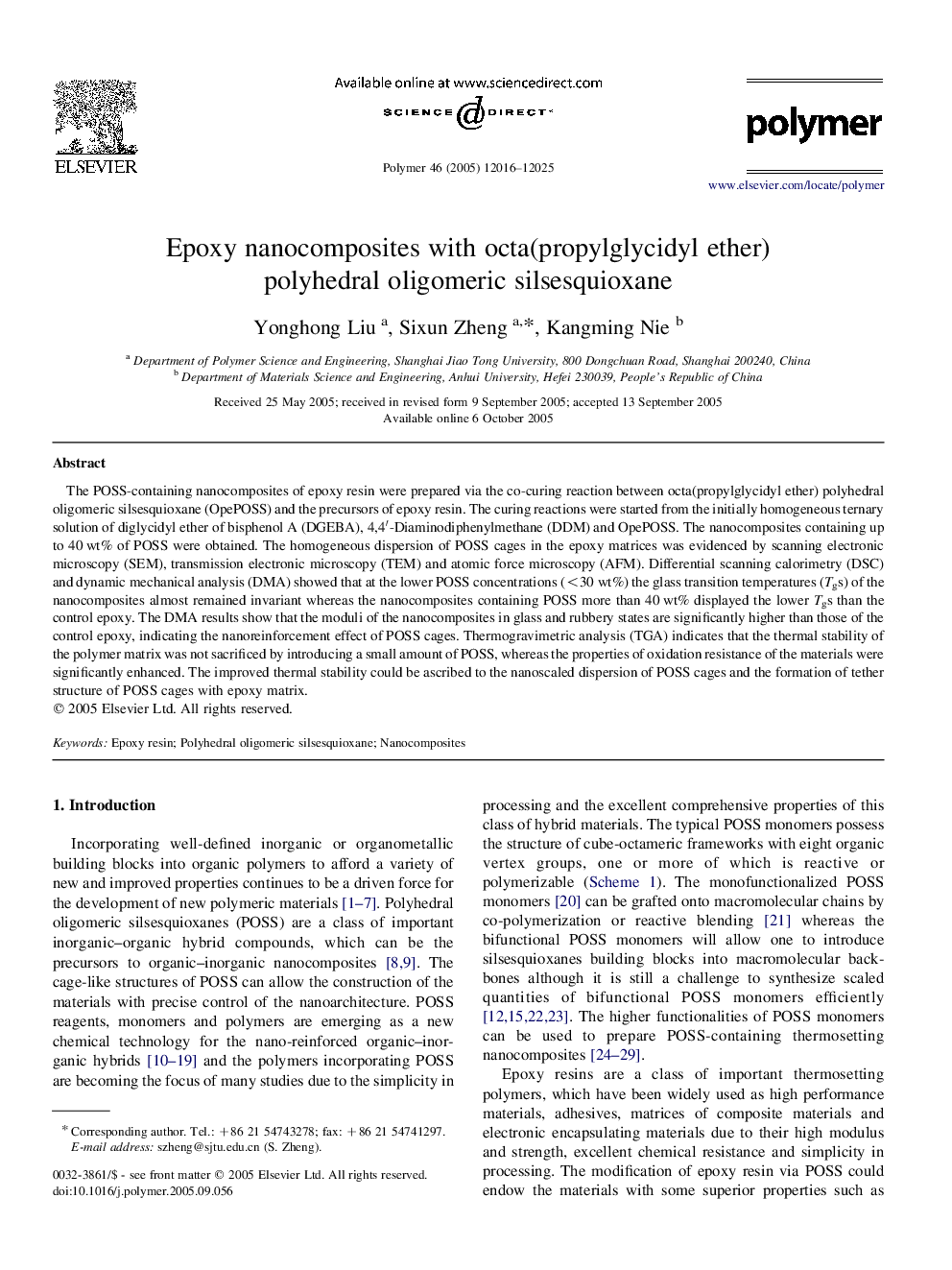| Article ID | Journal | Published Year | Pages | File Type |
|---|---|---|---|---|
| 5187571 | Polymer | 2005 | 10 Pages |
The POSS-containing nanocomposites of epoxy resin were prepared via the co-curing reaction between octa(propylglycidyl ether) polyhedral oligomeric silsesquioxane (OpePOSS) and the precursors of epoxy resin. The curing reactions were started from the initially homogeneous ternary solution of diglycidyl ether of bisphenol A (DGEBA), 4,4â²-Diaminodiphenylmethane (DDM) and OpePOSS. The nanocomposites containing up to 40Â wt% of POSS were obtained. The homogeneous dispersion of POSS cages in the epoxy matrices was evidenced by scanning electronic microscopy (SEM), transmission electronic microscopy (TEM) and atomic force microscopy (AFM). Differential scanning calorimetry (DSC) and dynamic mechanical analysis (DMA) showed that at the lower POSS concentrations (<30Â wt%) the glass transition temperatures (Tgs) of the nanocomposites almost remained invariant whereas the nanocomposites containing POSS more than 40Â wt% displayed the lower Tgs than the control epoxy. The DMA results show that the moduli of the nanocomposites in glass and rubbery states are significantly higher than those of the control epoxy, indicating the nanoreinforcement effect of POSS cages. Thermogravimetric analysis (TGA) indicates that the thermal stability of the polymer matrix was not sacrificed by introducing a small amount of POSS, whereas the properties of oxidation resistance of the materials were significantly enhanced. The improved thermal stability could be ascribed to the nanoscaled dispersion of POSS cages and the formation of tether structure of POSS cages with epoxy matrix.
